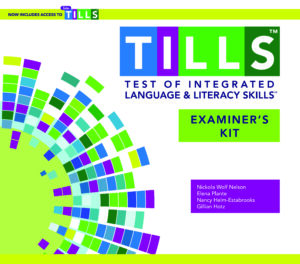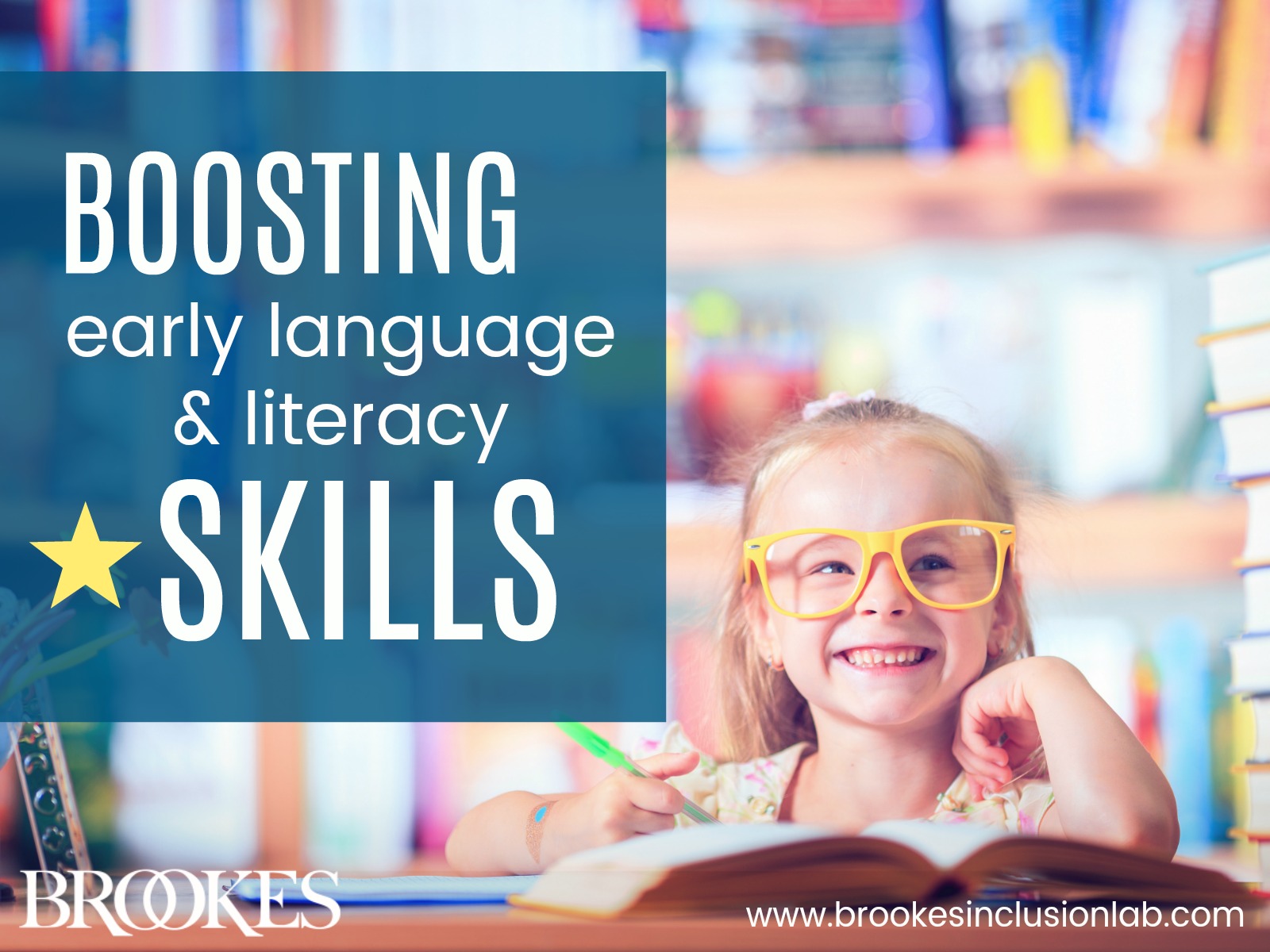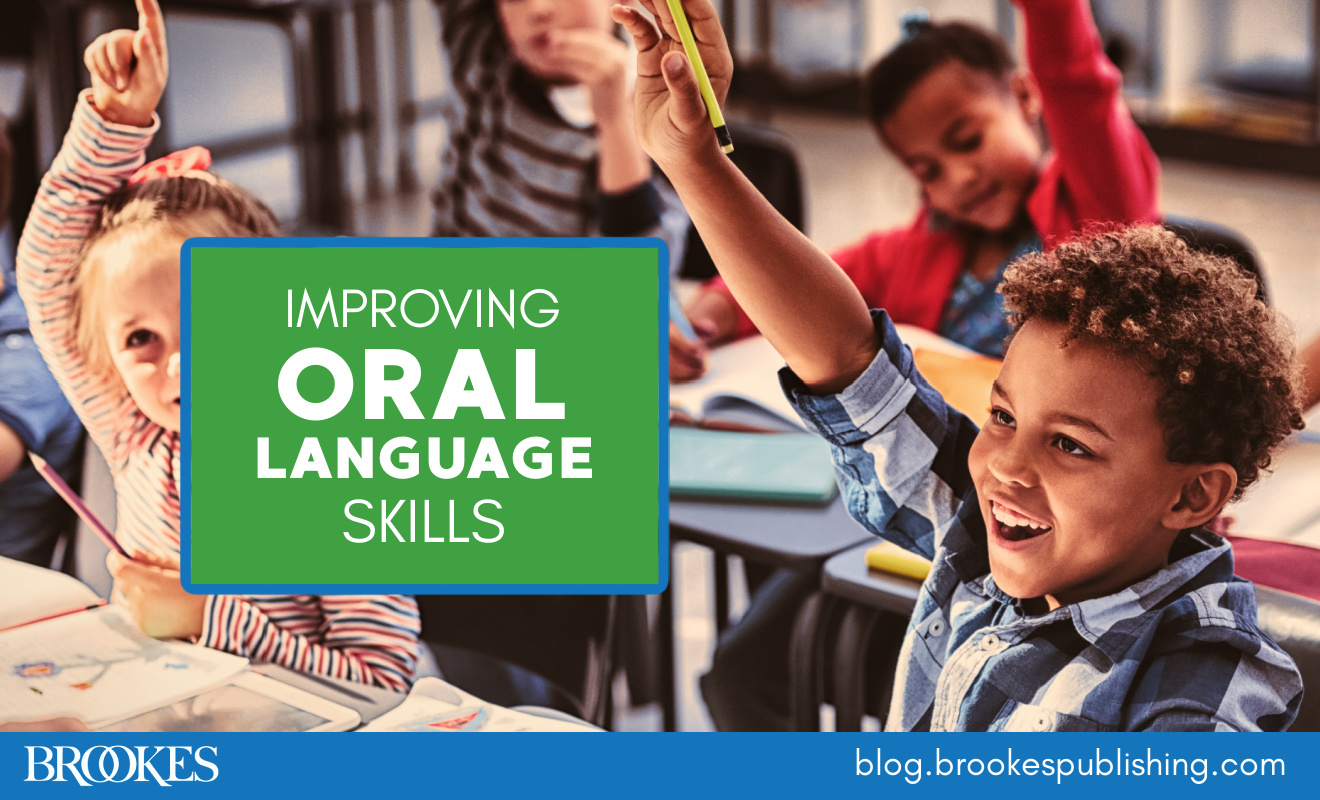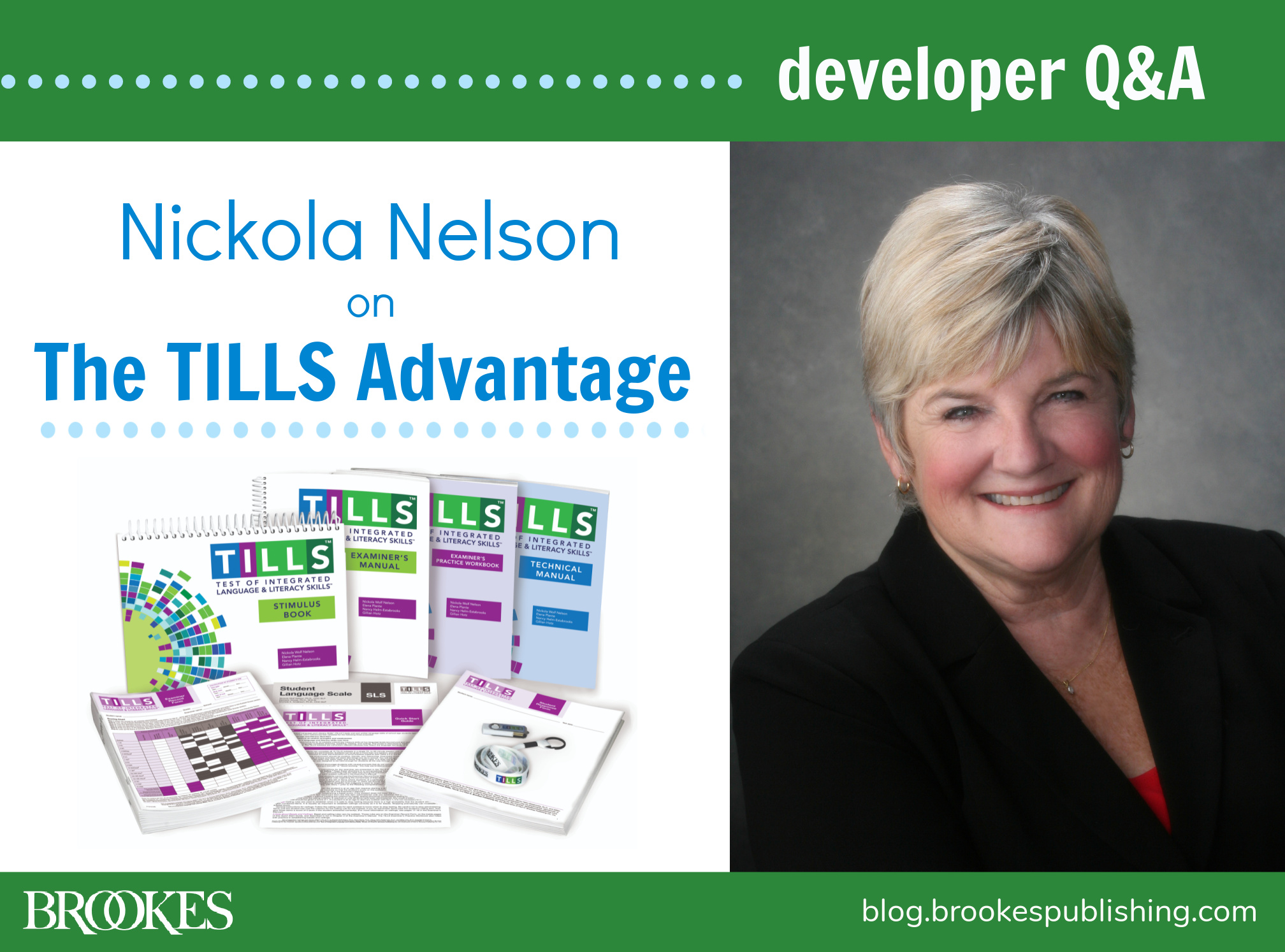 With so many language and literacy assessments on the market, it can be tough for test administrators to determine which tool they need to obtain the most reliable and comprehensive information about their students’ capabilities. To help clarify what makes the Test of Integrated Language & Literacy Skills™ (TILLS™) unique, we spoke with the lead developer, Nickola Nelson, Ph.D., CCC-SLP. In this Q&A, she talks about the advantages that set the TILLS apart from other language tests and make it a truly groundbreaking assessment for students ages 6–18.
With so many language and literacy assessments on the market, it can be tough for test administrators to determine which tool they need to obtain the most reliable and comprehensive information about their students’ capabilities. To help clarify what makes the Test of Integrated Language & Literacy Skills™ (TILLS™) unique, we spoke with the lead developer, Nickola Nelson, Ph.D., CCC-SLP. In this Q&A, she talks about the advantages that set the TILLS apart from other language tests and make it a truly groundbreaking assessment for students ages 6–18.
How does TILLS differ from other leading language assessments for school-age children?
A key difference is that TILLS is validated for identifying disorders of both language and literacy.
A key difference is that TILLS is validated for identifying disorders of both language and literacy. We refer to this as "language/literacy disorder" to communicate that language IS literacy and literacy IS language. TILLS is unique because it can show how a student’s oral and written language skills relate to each other at the sound/word structure level and at the sentence/discourse level. This information can be used in determining eligibility for special education services based on the presence of language impairment and/or learning disability.
Some other language tests have supplemental reading and writing tasks, but they are not designed to show profiles of interrelated oral and written language difficulties. To be more specific, some language assessments have reading comprehension and structured writing subtests, but they are not included in the core scores or index scores. Others yield reading and writing scores, but they use a scatter shot approach to measure a mixture of skills, which may be scored with single rubrics. That makes it difficult to interpret abilities on written language tasks relative to the student’s performance on comparable oral language tasks.
In contrast, using TILLS allows examiners to compare performance on Nonword Reading and Nonword Spelling with performance on oral tasks involving Nonword Repetition and Phonemic Awareness. This can help teams decide whether knowledge of phonological and morphological word structure is a strength or weakness that should be considered as part of intervention planning. Likewise, examiners can compare Listening Comprehension and Reading Comprehension directly to decide whether sentence/discourse problems are present, or, if Reading Comprehension is lower than Listening Comprehension, whether Reading Comprehension may be hampered by reading decoding problems.
I understand the Listening Comprehension and Reading Comprehension subtests in TILLS offer some advantages over other tests. Can you talk about that?
TILLS is unique in providing Listening Comprehension and Reading Comprehension subtests that are co-normed and structured the same.
TILLS is unique in providing Listening Comprehension and Reading Comprehension subtests that are co-normed and structured the same. Because of this, examiners can compare oral and written language comprehension directly to learn whether they are similarly high or low or if one is significantly higher than the other.
TILLS measures Listening and Reading Comprehension using parallel "yes/no/-maybe" tasks that emphasize comprehension of curricular language syntax and minimize influence of prior knowledge. This is different from many other tests that measure comprehension by asking short answer questions about the content of paragraphs students hear. Those tasks are not as straightforward to score, they often are highly dependent on memory for details, and they could be influenced by prior world knowledge or word finding difficulties.
The TILLS Listening Comprehension subtest avoids these problems by using syntactical forms that appear in curricular language but without using actual curriculum content. The yes/no/maybe structure assesses comprehension in a creative way that students enjoy. Part of the TILLS advantage is that students must decide if they have all the information they need to answer the questions or should select “maybe” as their answer. Another TILLS advantage is the presence of the Following Directions and Story Retelling subtests to measure two other aspects of listening comprehension for comparison.
Q. Can you compare and contrast the way TILLS and other tests assess vocabulary?
TILLS is different from other language assessments in the manner in which it assesses Vocabulary Awareness. This involves picking two out of three words that go together and telling why they go together; then picking a different set of two words out of the same group of three and telling why they go together in a different way. This allows examiners to observe how students make sense of the semantic relationships of words, including multiple meaning words, without focusing simply on vocabulary size and only on surface-level understandings.
We designed the Vocabulary Awareness subtest in this way to lessen some of the notorious problems of vocabulary tests to over-identify students of lower socio-economic status.
We designed the Vocabulary Awareness subtest in this way to lessen some of the notorious problems of vocabulary tests to over-identify students of lower socio-economic status. The TILLS subtest assesses the ability to think and talk about semantic relationships and the cognitive-linguistic flexibility to switch set and contemplate alternative meanings for multiple-meaning words. This requires higher level cognitive-linguistic skills and allows examiners to have a window into students’ awareness of word meanings. In contrast, on some other assessments, students are required simply to pick two out of three or four words that go together without having to say why they go together or to point to a picture to represent a word. This could reflect mostly guessing or a narrow understanding of word meanings.
Is there anything else you’d like to say to summarize the advantages of TILLS over other tests?
TILLS offers numerous advantages, but, in particular, it allows examiners to compare a student’s strengths and weaknesses across all four language modalities of listening, speaking, reading, and writing using a language levels model supported by scientific evidence. The TILLS Profile Chart on the back cover of the Examiner Record Form does this by graphically displaying scores in a way that is easy to interpret and to explain to parents, teachers, and students so that the team can decide what to do next. Plus, because the Profile Chart is supported by psychometrically sound factor analysis, and because identification core scores have good sensitivity and specificity at every age, examiners can be confident in the scientific evidence supporting their assessment of their students’ needs.
NOW AVAILABLE: Tele-TILLS materials!
 Since this Q&A was conducted, a study produced evidence that TILLS can be reliably administered using distance technology when you can’t see students face to face. The TILLS developers have made supplemental Tele-TILLS materials available to guide users who are supporting students in online settings. Learn more and find out how to purchase Tele-TILLS materials here.
Since this Q&A was conducted, a study produced evidence that TILLS can be reliably administered using distance technology when you can’t see students face to face. The TILLS developers have made supplemental Tele-TILLS materials available to guide users who are supporting students in online settings. Learn more and find out how to purchase Tele-TILLS materials here.
MORE TILLS RESOURCES
Get Dr. Nelson’s Q&A as a downloadable handout
Visit the TILLS website for an introductory webinar, FAQs, a 28-page sampler, case stories, and much more
Stay up to date on the latest posts, news, strategies, and more!
Sign up for one of our FREE newslettersMore posts like this

15 Ways to Boost Early Language & Literacy Skills in Inclusive Classrooms
September 3, 2019
Teaching Struggling Readers: 8 Steps to Effective Instruction
March 5, 2019


Write a Comment
Your email address will not be published. Required fields are marked *
Post a Comment